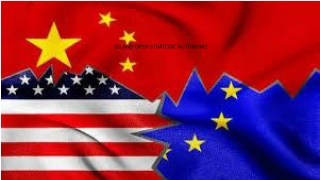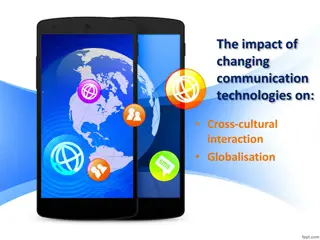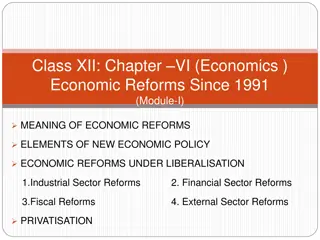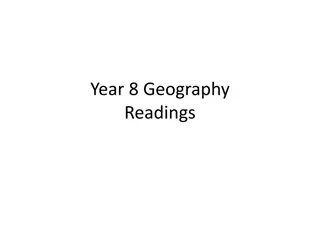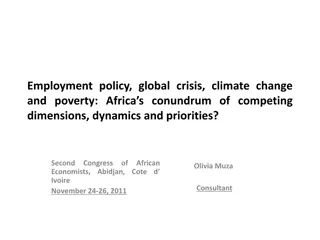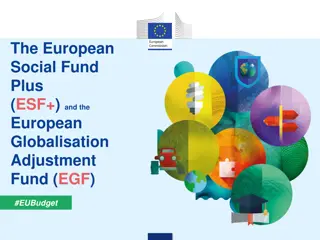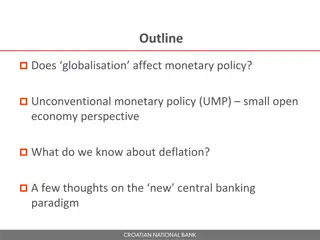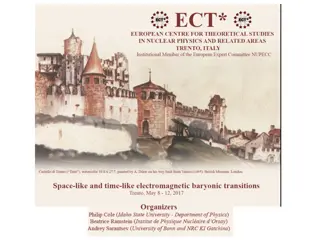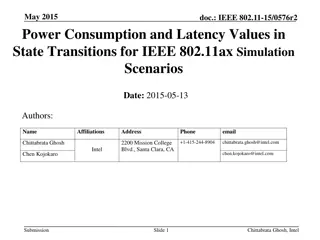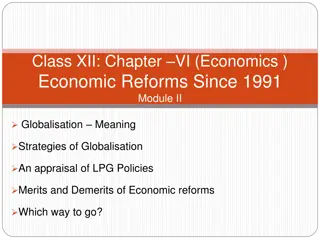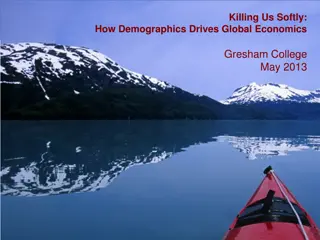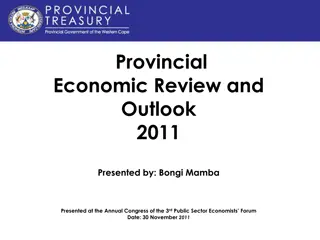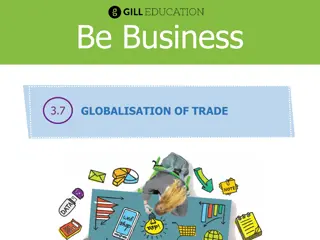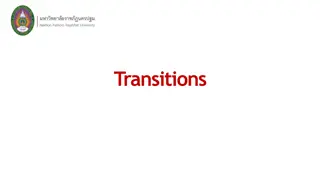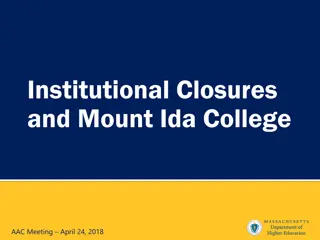
Dynamics of Globalisation: Understanding Global Economic Transitions
This course explores the evolution, components, and impacts of globalisation, focusing on economic interdependence, cultural integration, and technological diffusion at macro and micro levels. It covers free trade, capital flows, and the exchange of goods, services, and ideas globally.
Download Presentation

Please find below an Image/Link to download the presentation.
The content on the website is provided AS IS for your information and personal use only. It may not be sold, licensed, or shared on other websites without obtaining consent from the author. If you encounter any issues during the download, it is possible that the publisher has removed the file from their server.
You are allowed to download the files provided on this website for personal or commercial use, subject to the condition that they are used lawfully. All files are the property of their respective owners.
The content on the website is provided AS IS for your information and personal use only. It may not be sold, licensed, or shared on other websites without obtaining consent from the author.
E N D
Presentation Transcript
TITLE OF THE COURSE: GLOBALISATION NUMBER OF CREDITS: 03 COURSE CODE: ECO 132 NO. OF HOURS: 45 NO. OF LECTURES: 45 Course Objective: The course familiarises the students with dynamics of globalisation. It also focuses on issues pertaining to globalisation, global economic transitions and various other aspects related to it.
Module I: Evolution of Globalisation Module II: Salient Aspects of Globalisation Module III: Components of Economic Globalisation and Measurement References: P. Subba Rao (2017) International Business, Himalaya Publishing House, Mumbai, Fourth Revised Edition. Francis Cherunilam (2010) International Business: Text and Cases, Fifth Edition PHI Learning Pvt. Ltd, New Delhi
EVOLUTION OF GLOBALISATION MODULE 1
WHAT IS GLOBALIZATION? Globalization is the process by which ideas, knowledge, information, goods and services spread around the world. Integrated Economies give rise to Globalisation: free trade free flow of capital among countries easy access to foreign resources (labour markets etc)
Globalisation increases: interaction Integration interdependence among nations The more countries and regions of the world become intertwined politically, culturally and economically, the more globalized the world becomes.
DEFINITION OF GLOBALISATION The IMF defines globalisation as the growing economic interdependence of countries worldwide through increasing volume and variety of cross border transactions in goods and services and of international capital flows, and also through the more rapid and widespread diffusion of technology . It is defined as the extension of trade, commerce and culture of an economy across different nations. It allows economies to exchange domestic products, services, technologies, ideas and other resources globally.
We may consider globalisation at two levels at the Macro level at the Micro level (globalisation of the world economy) (globalisation of the business and the firm) Globalisation of the economies and globalisation of business are very much interdependent. Globalisation of the world economy is achieved by globalising the national economies.
GLOBALISATION OF WORLD ECONOMY The world economy has been emerging as a global or Transnational Economy. A global or transnational economy is one which goes beyond the limits of the national borders unhindered by artificial restrictions like Government restrictions on trade and factor movements. Economic transnationalism refers to the flow of money, people, goods, technology, and human capital across national borders. Both the sending and receiving countries, as wells as the businesses involved, hope to benefit from these exchanges. Globalisation is a process of development of the world into a single integrated economic unit.
TRANSNATIONAL ECONOMY IS DIFFERENT FROM INTERNATIONAL ECONOMY: International Economy Transnational Economy It is characterised by the existence of different national economies The transnational economy is a borderless world economy the economic relations between them are regulated by the national Governments. It is characterised by free flow of trade and factors of production across national borders.
CHARACTERISTICS OF TRANSNATIONAL ECONOMIES: 1. It is shaped mainly by money flows rather than by trade in goods and services. 2. In the transnational economy, management has emerged as the decisive factor of production 3. The goal is market maximisation and not profit maximisation.
4. Trade, which increasingly follows investment, is becoming a function of investment. 5. The decision-making power is shifting from the national state to the region (i.e., the regional blocs like the European Community, North American Free Trade Agreement, etc. 6. There is a genuine and almost autonomous world economy of money, credit and investment flows. It is organised by information which no longer knows national boundaries. 7. There is a growing pervasiveness of the transnational corporations which see the entire world as a single market for production and marketing of goods and services.
EVOLUTION OF GLOBALISATION Globalization is not a new phenomenon. Today s globalization has developed through different phases which started in ancient times. Human beings always moved from one place to another place with the purpose of trade. They exchanged goods, skills, and ideas with other people from history.
1450 - 1750 The Age of Exploration Exploration and colonization began the process of early globalization. The discovery of new lands and resources led to trade between peoples. Colonization brought ideas, customs, political systems, and religions from European nations and enforced their practice on existing cultures in all corners of the world. The establishment of colonies, and the beginning of the international slave trade on a large scale, led to a rapid increase in resource extraction and economic growth.
1750-1800 Beginning of Industrial Revolution During this period, the process of transition from an agrarian society to an industrial society occurred. The use of machines allowed for faster and greater extraction of resources. Early factories were established and the large-scale production of consumer goods led to increasing urbanization.
1870-1919 First Phase of Globalization The first phase of globalization began around 1870 and ended with the World War I (1919) It was driven by the industrial revolution in the UK, Germany and the USA. Technological advancements in transportation such as the steam powered ship and locomotives increased the speed at which goods were exchanged. Major discoveries such as electricity revolutionized technology across all sectors, leading especially to advancements in communication. The ability to communicate quickly across long distances fundamentally sped up the pace at which the world operated and connected people in places that would have otherwise been unreachable or taken long periods of time to reach. All of this led to an unprecedented period of economic growth and development. Then came the First World War (1914) and all the countries close their borders again. Global trade fell down again.
POST WORLD WAR I & II The World Wars brought with them disaster on a global scale. The positive effects of globalization that the world had been enjoying found their end in conflict, destruction, and the loss of millions of lives. Economies of some countries crashed due to the wars, while other countries profited off them, and were even lifted out of economic depressions. The terrible wake of the wars called for an increase in cooperation for international peace and economic prosperity, leading to the formation of many organizations intended to create and maintain stability.
1950 ONWARDS Second Phase of Globalization The World Wars altered the course that globalization had taken, redirecting it towards international cooperation, stability, and peace. The march of capitalism continued, and countries such as China and India rose to rival Western economic dominance. The rapid development of new technology continued and accelerated even further. Medical and scientific advancements occurred at an astonishing rate, with computers allowing the development of previously unimaginable inventions. The internet transformed communication and education, making information available to anyone with internet access.
The term International Business has emerged from the term International Marketing which in turn emerged from the term International Trade . International Trade to International Marketing: Originally, producers used to export their products to the nearby countries and gradually extended the exports to far-off countries. Gradually, the companies extended the operations beyond trade. For example, India used to export raw cotton, raw jute and iron ore during the early 1900s. The massive industrialisation in the country enabled us to export jute products, cotton garments and steels during 1960s. India during 1980s could create markets for its products in addition to mere exporting. The export marketing efforts include creation of demand for Indian products like textiles, electronics, leather products, tea, coffee, etc
International Marketing to International Business: The multinational companies which were producing the products in their home countries and marketing them in various foreign countries before 1980s started locating their plants and other manufacturing facilities in foreign countries. Later they started producing in one foreign country and marketing in other foreign countries. For example, Hindustan Lever Limited (HLL) Thus the scope of international trade and International marketing is expanded into international business.

